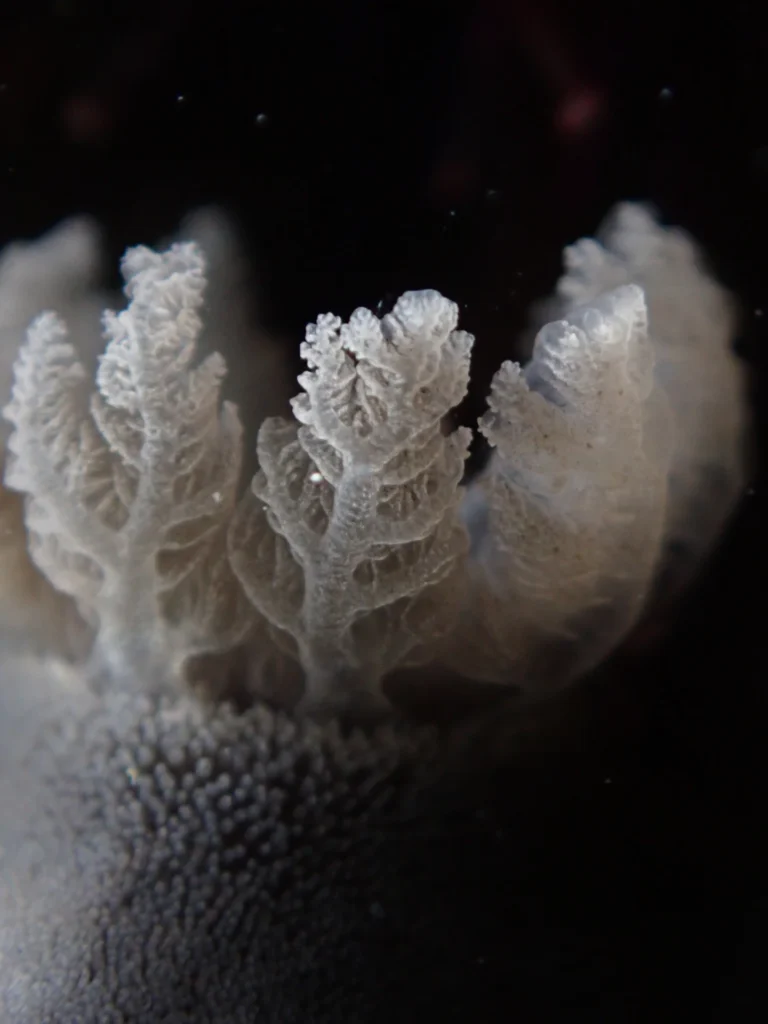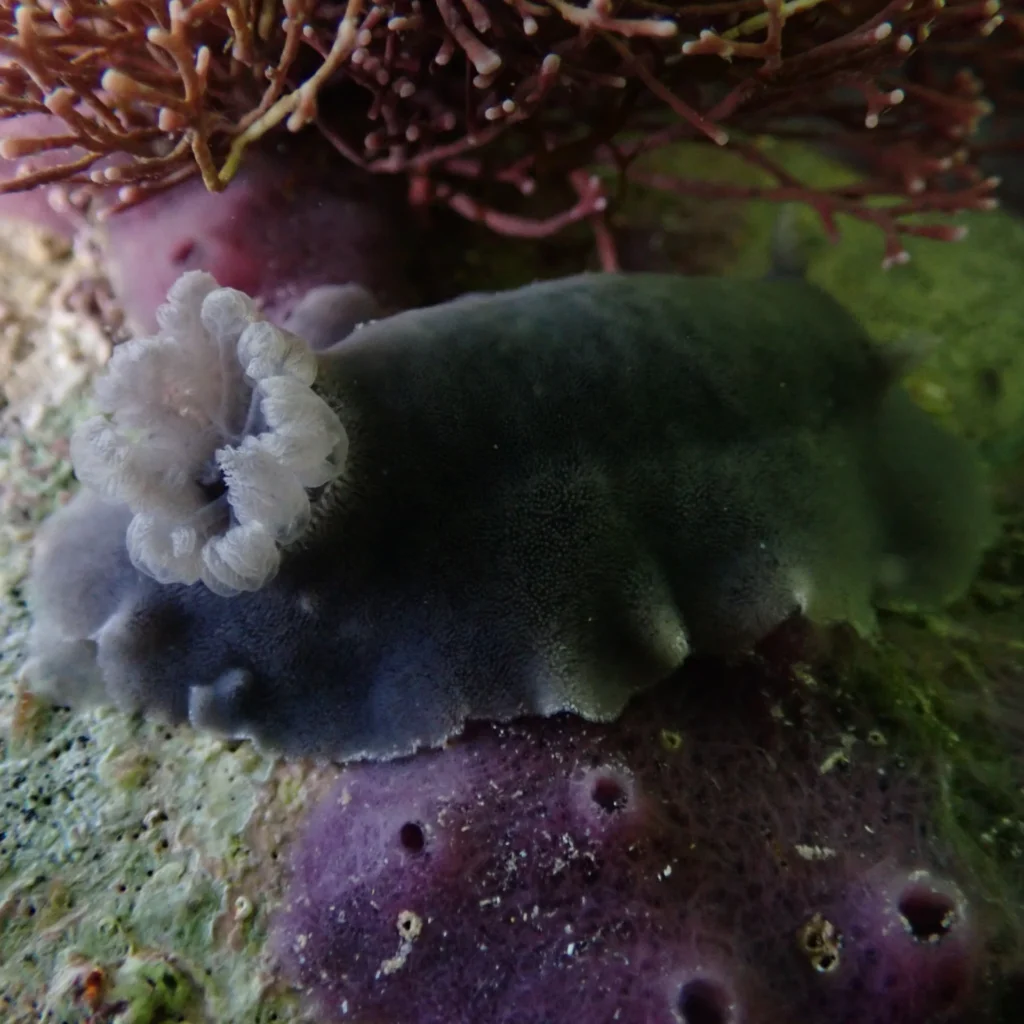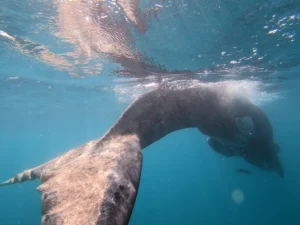Dorids, commonly known as dorid nudibranchs (Doridoidea), belong to the group of soft- bodied sea slugs scientifically classified as Opisthobranchia. The term Doridoidea originates from the genus name Doris, which itself traces back to the sea nymph of the same name in Greek mythology. With a remarkable diversity exceeding 2000 species, dorids stand out as one of the largest groups among nudibranchs.
Dorids are renowned for their striking appearance, characterised by vibrant colours and interesting shapes. Their most distinguishing features are the specialised circular arrangement of gills, known as the branchial plume, situated at the centre or rear portion of their back, as well as the antenna-like sensory organs on the head known as rhinophores.

Unlike their mollusc relatives, dorids lack a protective shell. Along their evolutionary journey dorid nudibranchs developed specialised adaptations for defence, including the utilisation of toxic chemicals obtained from their prey – thus no longer requiring the protection of a hard shell. These chemicals, stored within their tissues, act as deterrents against potential predators. Their vivid coloration serves as a visual warning — a phenomenon known as aposematism. Despite these adaptations, dorids’ primary predators are other sea slugs, and some marine species such as sea spiders which have evolved to resist their chemical defences.
Dorid nudibranchs are found in a range of environments spanning from temperate to tropical waters. As benthic organisms, dorids are found on substrate in diverse habitats, including intertidal rocky shores and reefs. Here, they feed on a wide array of organisms, including sponges, hydroids, bryozoans, and even other nudibranchs. Their feeding habits play an important role in regulating the populations of these prey species within their ecosystems.

As simultaneous hermaphrodites, dorid nudibranchs possess both male and female reproductive organs. During mating, individuals exchange gametes, promoting genetic diversity within populations. Some species exhibit elaborate courtship rituals involving intricate behaviours to attract potential mates. Following mating, dorid eggs are typically laid on substrate in ribbons containing protective chemical toxins. After hatching, they experience their first life-cycle stage as planktonic larvae. These larvae then undergo a complex metamorphosis before settling into their adult form.
The presence of dorid nudibranchs serves as an important indicator of ecosystem health, with changes in their populations reflecting alterations in environmental conditions such as water quality, temperature, and habitat availability. Beyond their ecological significance, the diversity of dorid species offers ocean-goers and kelp forest explorers’ endless opportunities for exploration and discovery, with each new encounter further revealing the extent of biodiversity within these marine ecosystems.



